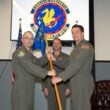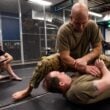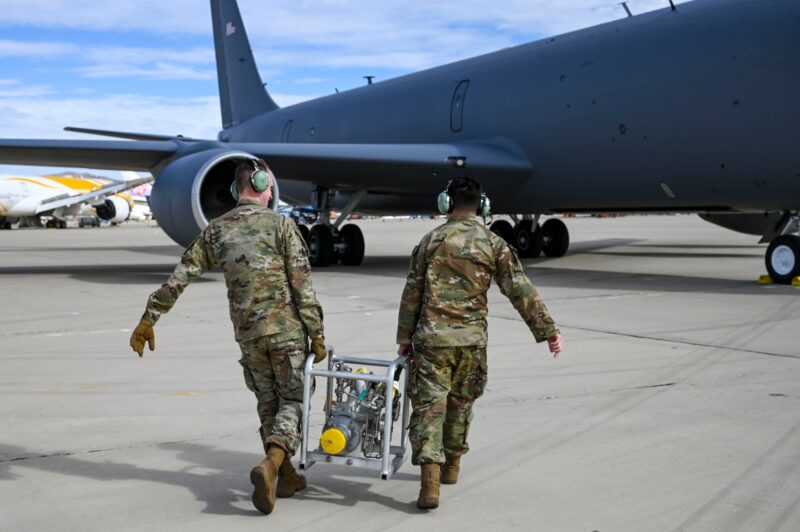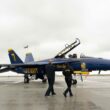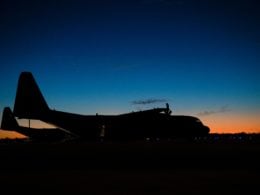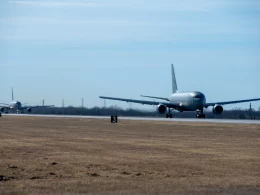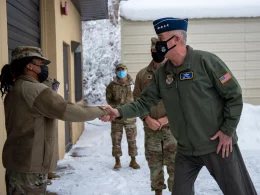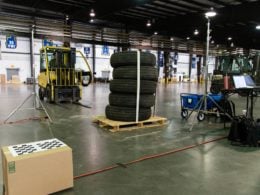VICTORVILLE, Calif. —
The 92nd Air Refueling Wing Innovation Cell compiled a Tanker Generation Team during exercise Bamboo Eagle 24-1 to develop Mission Ready Airmen and certify air mobility professionals with various Air Force Specialty Codes in hot-pit refueling during exercise Bamboo Eagle 24-1, in Victorville, California Jan. 29-Feb. 1, 2024.
During this component of the exercise, Airmen learned to rapidly re-fuel aircraft on the ground, marking the first time the U.S. Air Force and Fairchild Air Force Base demonstrated the MRA concept in this way and changing the way that the USAF organizes, trains and equips Airmen for the first time in 20 years.
“The TGT is the KC-135’s solution for adaptive operations in a contested environment,” said U.S. Air Force Lt. Col. Nate Mocalis, director of Fairchild AFB’s Innovation Cell. “The TGT utilizes minimum manning, like a mini contingency response team, to deliver persistent mission generation at tanker drop-in locations. The Airmen on our team are all ‘seven-levels’ in their individual fields, but they’ve been given enough training in cross-functional specialties to be combat effective in assuming the role of any other member on the team.”
Each day of Bamboo Eagle 24-1 consisted of multiple jets landing in Victorville to execute hot-pit refueling using Versatile Integrating Partner Equipment Refueling kits. The specialized hose and adapter in the VIPER kits allow ground crews to safely execute hot-pit refueling with fuel trucks that have not gone through the Air Force certification process, enabling the Air Force to use any fuel truck for hot-pit refueling.
“This is a game changer,” said Mocalis. “We’re essentially able to land at any airfield, kick off a VIPER kit and execute hot-pit refueling at any tanker drop-in location.”
U.S. Air Force Tech. Sgt. Mason Moguin, noncommissioned officer in charge of the Fairchild AFB warfighting cell, explained that the VIPER kits can also be used as an extension if the trucks don’t have long enough hoses.
“There’s a distance the trucks have to be at during hot pits, so if they don’t have the right length hose, they can use the VIPER kit to extend that or if the trucks are not tested properly, you can hook their hoses into it,” Moguin said.
This landmark exercise tested the TGT’s ability to rapidly generate tanker aircraft away from main operating bases and the force’s ability to quick-turn aircraft to follow-on missions. Airmen in the Tanker Generation Team learned to perform multiple roles to dynamically support multiple aircraft.
“The team is there to generate tankers and keep them off the ground to stop them from being targets and perform those refueling operations quickly with small teams,” Moguin explained. “We’re a new capability. We can go out there and be the small team that does the whole mission ourselves.”
This minimally manned team managed to refuel, resupply and provide hot meals to aircrews that were turning to finish the second half of their over 20-hour long missions, creating a template for future Air Force operations.
“The team ran concurrent operations from central node from which they had secure communications with the Air Operations Center,” Mocalis explained. “They delivered secure mission packages and intelligence updates to crews as they landed and [adjusted their] missions to accommodate changes in the Joint Tasking Order. The team essentially made a mini field operations center, complete with secure internet, HF, UHF and VHF radios, allowing the team to act as a central communications node between the AOC, the Tanker Task Force [capable of reaching] aircraft directly via short-wave and long-wave radios.”
According to Mocalis, the “secret sauce” to turning any location to a secure operations center and mimic an Air Force command post is a robust expeditionary communications solution. Members of the 242nd Combat Communications Squadron deployed alongside the Tanker Generation Team to set up secure communication equipment in austere locations.
“For us, Combat Communications is about innovative solutions,” explained Master Sgt. Jake Cornella, an information technology specialist assigned to the 242nd CBCS. “Every exercise has different requirements, and we try to provide specific solutions for those needs. Everything from antenna location to routing cables around walkways get taken into account. It can be a lot of pressure knowing even a single missing adapter from a radio cable kit could delay or prevent Lt. Col. Mocalis and his team [from] being in the right place at the right time, so we put a lot of effort trying to anticipate every possible issue.
“Exercises like this have so many moving pieces and participants,” Cornella added. “I’m truly impressed with the Fairchild team’s accomplishments and how we all came together to support each other in this vital preparation mission.”
Moguin pointed out that by sharpening MRA skills, the TGT can deliver a new capability to the Air Force that dramatically increases aircraft survivability during Agile Combat Employment.
“As the Air Force begins its reoptimization for great power conflict, innovative techniques like the Tanker Generation Team will enable Adaptive Operations and help America keep her combat advantage in any theater of conflict,” he said.




